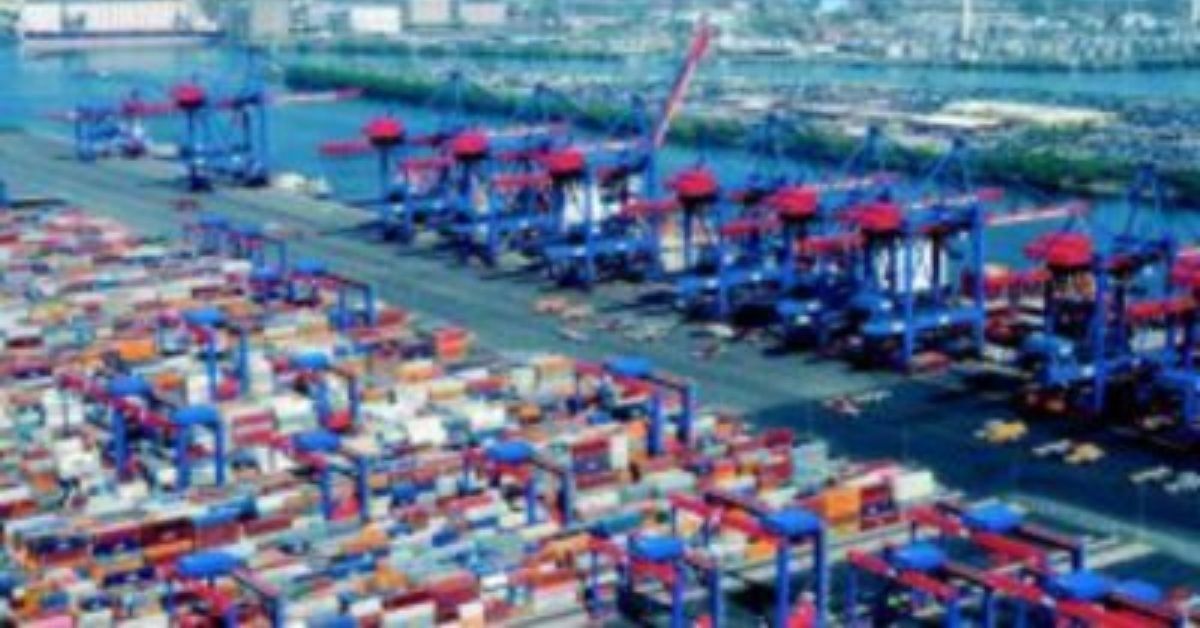The Port of Hamburg along with several of its major operators has come up with a novel way to handle port congestion and backlogs as well as the emissions resulting during the transshipment of containers in the vast port complex. Starting November 1, a project will launch with Unifeeder, which calls Hamburg its largest hub port for transshipments, using the line’s vessels to move containers instead of trucking containers over the roads between terminals.
In 2021, Hamburg handled nearly 9 million TEU, which while down slightly from 2020, still places the port as number 20 in the ranking of world ports. Last year, there were more than 3,500 containership calls in the port including more than 200 by ultra-large vessels transporting at least 18,000 TEU. A key destination especially on Asian shipping routes, Hamburg is also one of the leading transshipment ports in Northern Europe. Port officials highlight that in total, the Port of Hamburg had approximately 3.3 million TEU of transshipments in 2021. Although not all of them are transferred between terminals, they report that large numbers of containers are moved by truck each day between the major terminals at different locations around the port.
“Ship-based transshipments can take several thousand containers off the road each year. Every container we can move via waterway means a reduction in C02,” said Alexander Geisler, Managing Director of DIHLA DAKOSY Interessengemeinschaft Hamburger Linienagenten (DIHLA), one of the companies helping to initiate the seaborn transfers. Danish shipping company Unifeeder is the initiator, together with the Hamburg software specialist DAKOSY and DIHLA, which participated in creating a digital process that also covers customs handling to transship containers in the port by ship. They devised a new electronic transshipment manifest establishing the framework for the digital processes and customs handling of feeder transshipments.
Unifeeder highlights that it has up to 85 terminal calls per week with its current operation giving it the capacity to facilitate these transfers. The service will provide container transfers by feeder ship between the HHLA terminals CTA, CTT, and CTB, as well as Eurogate and, in the near future, the Süd-West Terminal. During a three-month trial, they reported they were already able to move about 50 containers per month. Looking further ahead, Unifeeder is endeavoring to switch 50 percent of its transshipment operations from trucks to feeder carriers.
According to port officials, the projected benefits include providing relief to the port infrastructure by reducing the number of truck journeys between the terminals, shorter waiting times at the terminals, and a related decrease in CO2 emissions. Like many ports, Hamburg has been reporting a shortage of qualified truck drivers, which they hope the feeder ship transshipments will also help to alleviate.
“We have been feeling the effects of the declining number of young truck drivers for years,” said Florian Pein, Area Director West and Central Europe at Unifeeder. “This is increasingly leading to a serious lack of transshipments resources and leads to long waiting times in the Port of Hamburg,”
The company sees a high potential to switch from road to waterway a significant number of containers. The new integration model developed for the Port Community System is drawing broader interest from other feeder carriers reports DAKOSY and starting November will be available more broadly for companies operating in the Port of Hamburg.







